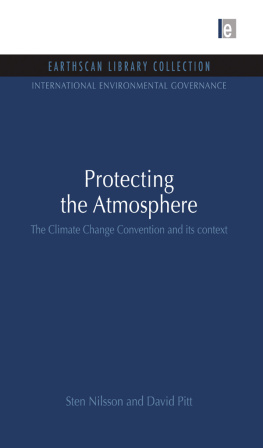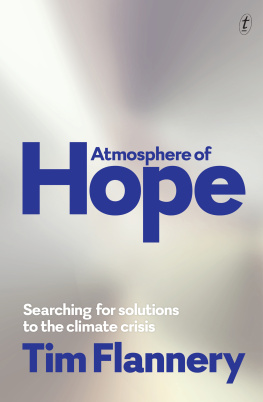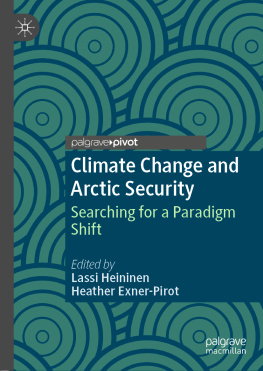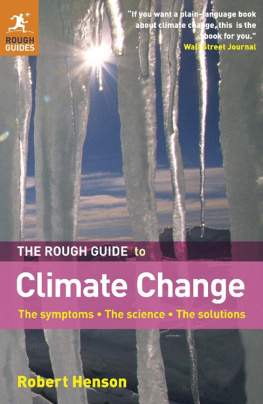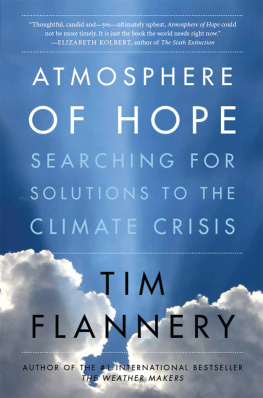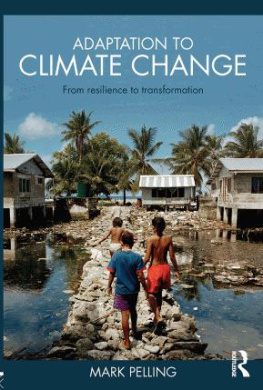Full list of titles in the set
I NTERNATIONAL E NVIRONMENTAL G OVERNANCE
Volume 1: Acid Rain in Europe
Volume 2: Getting to Grips with Green Plans
Volume 3: The Global Politics of Pesticides
Volume 4: Acid Earth
Volume 5: Earth Summit II
Volume 6: Fair Weather
Volume 7: Future Generations and International Law
Volume 8: Greening International Institutions
Volume 9: A Guide to EC Environmental Law
Volume 10: Managing the Planet
Volume 11: Protecting the Atmosphere
Volume 12: From Earth Summit to Local Agenda 21
Volume 13: Futile Progress
Volume 14: Yearbook of International Cooperation on Environment and Development 199899
Volume 15: Yearbook of International Cooperation on Environment and Development 19992000
Volume 16: Yearbook of International Cooperation on Environment and Development 200102
Volume 17: Yearbook of International Cooperation on Environment and Development 200203
Volume 18: Yearbook of International Cooperation on Environment and Development 200304
First published in 1994
This edition first published in 2009 by Earthscan
Copyright Sten Nilsson and David Pitt, 1994
All rights reserved
ISBN 978-1-84407-998-8 (Volume 11 hbk)
ISBN 978-1-84407-984-1 (International Environmental Governance set)
ISBN 978-1-84407-930-8 (Earthscan Library Collection)
ISBN 978-0-415-84923-4 (Volume 11 pbk)
ISBN 978-1-13405-609-5 (ePub)
For a full list of publications please contact:
Earthscan
2 Park Square, Milton Park, Abingdon, Oxon OX14 4RN
Simultaneously published in the USA and Canada by Earthscan
711 Third Avenue, New York, NY 10017
Earthscan is an imprint of the Taylor Francis Group, an informa business
First issued in paperback 2013
Earthscan publishes in association with the International Institute for Environment and Development
A catalogue record for this book is available from the British Library
Library of Congress Cataloging-in-Publication Data has been applied for
Publishers note
The publisher has made every effort to ensure the quality of this reprint, but points out that some imperfections in the original copies may be apparent.
At Earthscan we strive to minimize our environmental impacts and carbon footprint through reducing waste, recycling and offsetting our CO2 emissions, including those created through publication of this book.
Alp Action, the corporate funding programme for the alpine environment, has become one of the most influential organizations concerned with cold environments. Working with industry, science and ecology, Alp Action has convened a powerful message in the media of how changing atmospheric conditions have ruined the mountains, causing deforestation, aridity, erosion, flooding, glacial retreat and disappearing snow. Alp Action has stressed education to reduce the carbon excess which lies behind the environmental destruction, but also supports legislation like the climate change convention.
This book is a successor to Mountain World in Danger: Climate Change in the Mountains and Forests of Europe by the same authors and in partnership with Banque Unigestion. Alp Action is part of the Bellerive Foundation, a non-profit organisation founded by Prince Sadrunnin Aga Khan in 1977. Corporate partners are welcomed. For more information write to:
Alp Action
1 Rue Muzy
Geneve 1207
Switzerland
First published in the UK in 1994 by
Earthscan Publications Limited
120 Pentonville Road, London N1 9JN
Published in association with Alp Action
Copyright Sten Nilsson and David Pitt, 1994
All rights reserved
A catalogue record for this book is available from the British Library
ISBN: 1 85383 161 1
Earthscan Publications Limited is an editorially independent subsidiary of Kogan Page Limited and publishes in association with the International Institute for Environment and Development and the World Wide Fund for Nature.
The ongoing debate on the greenhouse effect and global warming continues to generate much concern and discussion. How long will it take for the ice caps and the glaciers to melt? Will rising sea levels engulf low-lying countries? There have been heat waves throughout planet earths history, but this is the first to be caused by our carbon greed.
This book is particularly interesting because it moves from words to action: just what can we do? As with other man-made disasters, there is an urgent need to establish a measure of law and order. This is what the Climate Change Convention is trying to do. At the same time, the reader is shocked to note how difficult it is to get agreement even on the most sane and sensible rules. The authors take us into the less-known corridors of climate Realpolitik and energy power play. We are provided with the essential vocabulary to understand what is at stake and how the challenge should be tackled.
Already there have been wars over environmental resources. Will the air we breathe become another source of conflict? An educational campaign is essential so that consumers can turn their concern into action.
May this book and the Convention achieve this goal.
Prince Sadruddin Aga Khan
Chairman of Alp Action
Geneva
The importance of this slim volume is that it provides all those concerned about climate change with a remarkably well-documented account of the Framework Convention on Climate Change. The authors have skillfully presented the consequences of this threat to the habitability of our planet, so that even the least imaginative among us is aware of them. They have clearly shown the links between geopolitical maneuvering and scientific discoveries in meteorology and earth sciences, in general.
This book emphasizes that the 20th-century globalization of the Industrial Revolution makes it impossible to extrapolate the technological and economic lifestyle of the rich industrialized countries to the earths population as a whole. And, in my opinion, this leads us to the following urgent requirements:
- It is crucial that industrialized countries recognize the need to question this lifestyle, not only because it is unethical, being neither generally nor universally applicable, but also because it condemns our fellow citizen in Third World countries, and indeed future generations in the industrialized countries themselves.
- It is essential that developing countries recognize the need to question their rate of population growth for the same reasons.

